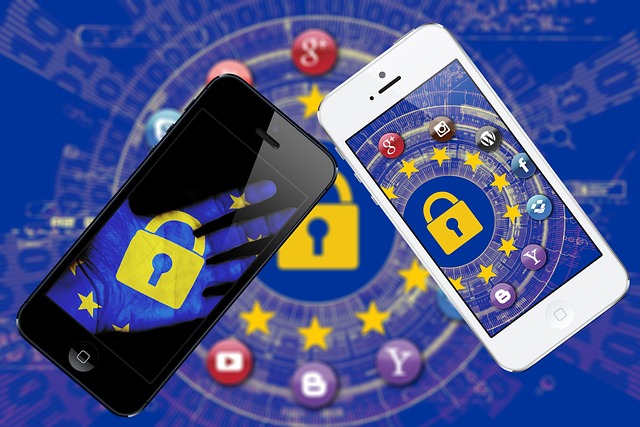In today’s connected world, learning no longer happens behind closed doors. Online platforms, from formal university courses to casual community workshops, have become the new classroom. With this shift comes a new set of expectations—what we call online learning etiquette. It’s more than just polite behavior; it’s a framework that helps learners, educators, and community members interact respectfully and effectively across digital boundaries.
Why Online Learning Etiquette Matters
The virtual environment blurs the line between personal and professional life. A well‑established etiquette system supports three core benefits: clarity, trust, and engagement. Clarity ensures everyone knows how to communicate, trust builds when participants feel safe, and engagement rises when interactions feel natural and supportive.
- Reduces misunderstandings that can stem from lack of non‑verbal cues.
- Creates a respectful atmosphere that values every voice.
- Encourages active participation by setting clear norms.
Foundations of Digital Respect
At the heart of online learning etiquette lies the principle of respect. This extends to time, space, and ideas. Respecting time means joining meetings promptly and keeping discussions on track. Respecting space involves keeping background distractions minimal and acknowledging that others may be in noisy environments. Respecting ideas means listening without interrupting and giving credit where it’s due.
“Respect in the digital space is a mirror of respect in the physical world; the same principles apply, just adapted to a new medium.”
Key Etiquette Practices for Learners
Whether you’re a student, a professional, or a hobbyist, there are habits that can elevate the learning experience for everyone. Below are six practical practices you can adopt immediately.
- Prepare Beforehand: Review the agenda, load resources, and test audio/video. This shows commitment and prevents technical delays.
- Use Clear Communication: When speaking, articulate your point concisely. When writing, use complete sentences and proper punctuation to avoid confusion.
- Mind Your Mute Settings: Keep your microphone muted when not speaking. This reduces background noise and allows the speaker to be heard clearly.
- Respond Thoughtfully: Pause to consider a question before answering, especially if you’re not certain. This shows deliberation rather than hasty replies.
- Respect Breaks: If the session includes short breaks, step away and refrain from chatting in unrelated groups. This respects the learning rhythm.
- Follow Up: After a session, send a brief thank‑you note or summarize key takeaways. This reinforces the learning loop.
Technology Etiquette: The Tools You Use
Every platform offers unique features that influence etiquette. Understanding how to use these tools effectively can minimize friction.
- Learning Management Systems (LMS) often have discussion boards. Use tags and categories to keep threads organized.
- Video conferencing platforms offer hand‑raising features; utilize them to signal you want to speak.
- Chat functions should be used for brief clarifications, not for off‑topic banter.
- File‑sharing services require clear naming conventions to avoid confusion—consider date–topic–author format.
- Screen‑sharing etiquette demands a quick pre‑check of the shared content to ensure no sensitive information is visible.
Community Dynamics and Social Trends
Learning communities evolve rapidly. As new technologies emerge, so do social norms. Three major trends are shaping online learning etiquette today.
- Micro‑Learning Pods: Small, focused groups often meet asynchronously. Etiquette here emphasizes timely responses and concise posts.
- Hybrid Interaction Models: Combining synchronous sessions with asynchronous discussions requires clear guidelines about response windows and expectations.
- Cross‑Cultural Participation: Global learners bring varied communication styles. Etiquette becomes a bridge, encouraging awareness of cultural differences in tone and expression.
Building an Inclusive Culture
Inclusion is not a buzzword; it’s a measurable outcome of strong etiquette practices. To foster inclusivity:
- Use accessible language and avoid jargon unless it’s clearly explained.
- Encourage the use of captions and transcripts in video content.
- Rotate speaking opportunities so quieter participants can contribute.
- Provide multiple channels for feedback, such as anonymous surveys.
Common Etiquette Pitfalls and How to Avoid Them
Even experienced participants can slip into unintentional faux pas. Below are typical mistakes and actionable corrections.
- Not Checking Audio/Video: A sudden glitch can disrupt the flow. Test devices 5 minutes before each session.
- Overloading Chat: Flooding a chat box with unrelated comments annoys participants. Reserve chat for brief, relevant queries.
- Using Informal Language Excessively: While tone matters, too much slang can reduce perceived professionalism. Balance warmth with clarity.
- Ignoring Turn‑Taking: Dominating conversations prevents others from speaking. Use a speaking queue or ask for permission to interject.
Leveraging Mentorship for Etiquette Growth
Mentors can guide new members in adopting the community’s norms. Structured mentorship pairs offer:
- Personalized feedback on communication style.
- Role‑playing scenarios to practice respectful dialogue.
- Regular check‑ins to ensure the mentor’s guidance aligns with evolving norms.
Tools to Reinforce Etiquette
While technology etiquette is largely behavioral, certain tools help maintain consistency.
- Etiquette checklists embedded in LMS modules.
- Automated reminders for session start times.
- Analytics dashboards that flag frequent disruptions.
- Feedback widgets that prompt participants to rate the communication experience.
Evaluating Etiquette Effectiveness
Periodic evaluation ensures that etiquette remains relevant and effective. Use these indicators:
- Average response time in discussion forums.
- Number of disruptive incidents reported.
- Participant satisfaction scores.
- Retention rates of community members over time.
Future Outlook: The Next Wave of Etiquette
As virtual reality, AI tutors, and adaptive learning systems become mainstream, etiquette will need to adapt. Anticipated shifts include:
- More nuanced consent protocols for data sharing during learning.
- Ethical guidelines for AI‑generated content participation.
- Standardized norms for cross‑platform interactions, such as linking a Discord community to an LMS discussion.
Action Plan for Communities
Communities can solidify etiquette by following a clear roadmap:
- Define core values and translate them into specific rules.
- Publish the rules in an accessible format within the platform.
- Offer onboarding sessions that walk new members through etiquette expectations.
- Schedule quarterly reviews to update guidelines based on feedback and technological changes.
- Celebrate adherence by recognizing members who consistently model best practices.
Mastering online learning etiquette is not a one‑time task; it’s an ongoing commitment that shapes how modern communities thrive in digital spaces. By weaving respectful communication, mindful technology use, and inclusive practices into everyday interactions, participants can create learning environments that are not only productive but also genuinely welcoming. As technology evolves, so too will the etiquette that keeps our communities connected, engaged, and respectful.




